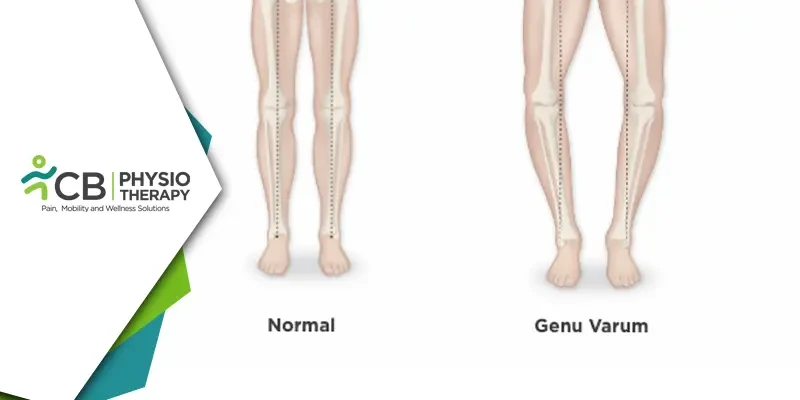Genu varum, also known as "bow legs," is a condition in which the legs curve outward at the knees while the feet and ankles touch. While many infants are born with bow legs, the condition typically resolves on its own by age two or three. However, in some cases, the condition may persist and require medical attention, as it can cause knee pain, loss of balance, and loss of flexibility. In this blog, we will explore how parents can know if their child has genu varum and also explore how Pediatric Physiotherapy can help treat genu varum by strengthening the weak muscles and stretching the stiff muscles.
Observing the Appearance of the Legs:
One of the easiest ways to determine if your child has genu varum is to observe the appearance of their legs. Bow legs can be identified by the following physical characteristics:
1. Curved legs: If your child's legs curve outward at the knees while their feet and ankles touch, they may have bow legs.
2. Separation of the knees: When your child stands with their feet together and their knees apart, there may be a noticeable gap between the knees.
3. Tilting of the ankles: When your child stands with their feet together, their ankles may tilt inward.
4. Uneven gait: Bow legs can also affect your child's gait or the way they walk. Your child may walk with an uneven gait or have difficulty running and climbing stairs.
5. Measuring the distance between the Knees: To measure the distance between the knees, the child is asked to stand with his feet together and knees touching. A ruler or measuring tape is then placed between the knees, with the zero point at the center of the kneecaps. The distance is measured from the center of one knee to the center of the other knee. However, it's important to note that other factors, such as hip alignment and foot position, can also affect the distance between the knees.
Physiotherapy can be a highly effective treatment option for individuals with genu varum. A physiotherapist will work with the patient to develop a personalized treatment plan that focuses on strengthening weak muscles, stretching stiff muscles, and improving overall alignment and stability. Here are some of the key ways that physiotherapy can help treat genu varum:
Weak muscles that need to be Strengthened:
Genu varum, the muscles that are typically weak are the abductor muscles on the outside of the thigh, and stretching alone may not be sufficient to address the muscle weakness. Stretching exercises can be beneficial for improving overall flexibility and range of motion, and may also help to reduce compensatory muscle tightness that can occur due to muscle weakness.
Muscles that are weak in children with genu varum include:
1. Gluteus medius
2. Tensor fasciae latae
These muscles are responsible for pulling the leg outward and maintaining proper alignment of the knees. Strengthening exercises, rather than stretching exercises, are typically recommended to address muscle weakness in children with genu varum.
Stiff muscles that need to be Stretched:
In addition to strengthening weak muscles, it's also important to stretch stiff muscles that may be contributing to the development of genu varum. The muscles that are tight in genu varum child and need stretching are the adductor muscles on the inside of the thigh. These include:
1. Adductor longus
2. Adductor Magnus
3. Adductor brevis
These muscles pull the leg inward and contribute to the bow-legged appearance in children with genu varum. Stretching these muscles can help to improve flexibility, reduce muscle tension, and improve the alignment of the knees.
If you suspect that your child has genu varum, it's important to consult with a physiotherapist. They can perform a physical examination and recommend an appropriate course of treatment. With the right treatment plan, most cases of genu varum can be effectively managed and corrected, allowing your child to enjoy improved stability, mobility, and overall quality of life.

